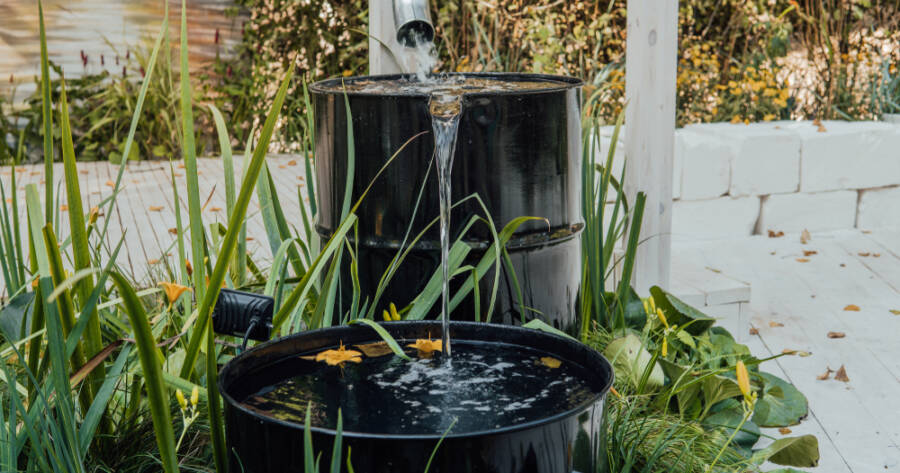Gardening doesn’t have to rely solely on treated tap water. With a rain barrel, you can collect and store rainwater to use later on your plants. It’s an easy, low-cost way to conserve water and reduce your utility bill. Even one barrel can make a difference for a small vegetable patch, flower bed, or collection of potted herbs.
Why Rain Barrels Matter
Rainwater harvesting is one of the simplest ways to make your garden more sustainable. Every time it rains, gallons of water run off your roof and down your gutters. By placing a rain barrel at the base of your downspout, you can collect that water instead of letting it go to waste.
This water is untreated and free of the chemicals often found in tap water, like chlorine or fluoride. Plants typically prefer this softer water, especially delicate flowers and edible crops. In dry seasons or drought-prone areas, having a supply of collected rainwater can help your garden stay healthy without added strain on your home’s water system.
Choosing the Right Barrel
Rain barrels come in many shapes, sizes, and materials. Some are made of recycled plastic, while others are crafted from wood or metal. Most include a spigot for easy access to the water and an overflow valve to handle excess rain. When selecting a barrel, consider how much rainfall your area typically gets and the size of the space near your downspout.
Larger barrels can store more water, but smaller models fit better in tight corners or patios. If you want a more decorative look, some barrels are designed to blend in with your garden décor. These might look like traditional pots or stone planters, while still serving their functional purpose.
Installing Your Rain Barrel
Setting up a rain barrel is easier than many people think. First, locate a downspout that drains a significant portion of your roof. This is where the most water will collect during a storm. Next, place your rain barrel on a level surface. Many people use cinder blocks or a small platform to elevate the barrel—this allows for better water pressure when using the spigot and makes it easier to fill watering cans or connect a hose.
Most barrels come with a diverter or require a simple modification to the downspout. This redirecting attachment channels rainwater directly into the barrel. Ensure the top of the barrel has a mesh screen to keep out debris and insects. Once connected, the barrel should begin collecting water the next time it rains. Always make sure it has an overflow outlet, so water doesn’t back up during heavy downpours.
Best Practices for Using Rainwater
Rainwater collected in barrels is perfect for garden use, but it’s not recommended for drinking, cooking, or bathing. Use it to water flower beds, vegetable patches, shrubs, or indoor plants. Some people even use it for washing garden tools or rinsing outdoor furniture.
To make the most of your water, try to use it within a week or two after collection. This helps prevent mosquito breeding and keeps the water fresher. If you’re storing for longer, consider adding a mosquito dunk or screen cover as a preventative measure. It’s also a good idea to disconnect or drain your rain barrel before the first hard freeze in winter to prevent cracking.
Here are a few tips for getting the most benefit from your barrel:
- Water early in the morning or late in the day to minimize evaporation.
- Use mulch around plants to help soil retain moisture from your rainwater.
These simple steps will stretch each barrel-full even further and support healthier plant growth.
Expanding with Multiple Barrels
If you have the space and a large roof area, you might consider installing more than one barrel. Some gardeners connect several barrels with hoses, allowing overflow from one to fill the next. This setup is especially useful in areas that receive a lot of rainfall at once.
Multiple barrels can also help you target different parts of your garden. For example, one might be placed near your vegetable garden, another near flower beds, and a third near patio plants. This strategy reduces the need to carry water long distances and makes your watering routine more efficient.
You don’t need to install all your barrels at once. Many people start with one and add more after seeing the benefits. With each new barrel, you’ll store more water, reduce runoff, and provide more nourishment to your plants without increasing your tap water usage.
A Greener Garden, One Drop at a Time
Installing a rain barrel is a simple step that brings lasting benefits. It helps you save water, reduce runoff, and care for your plants more naturally. With just a bit of effort, any home—urban or rural—can turn rainfall into a resource instead of waste. Whether you’re watering tomatoes, flowers, or houseplants, every drop you collect supports a more sustainable garden.
As you watch your plants grow stronger and your water bill stay steady, you’ll see how one small change can make a big difference. Rain barrels may be simple, but the impact they create is anything but.
